Many of the general histories of European science begin with the Ancient Greeks. They might give a brief nod to the earlier cultures from whom the Greeks borrowed such as the Egyptians and Babylonians, when dealing with astronomy or mathematics, but simply ignore other ancient civilisations such as India and Persia from whom they might have borrowed, after all Alexander the Great invaded both land in the fourth century BCE. The Persians actually claim that they invented astrology and Alexander stole it. China almost never gets a look in, although modern research has shown that transglobal trade within the Afro-Eurasian oikouménē took place much earlier than previously believed. I have neither the necessary knowledge nor the capabilities as a historian to cover those earlier sources, so I too will begin with the Ancient Greeks but with the very clear indication that the story doesn’t really begin with them.
Most of those histories also begin with the so-called pre-Socratic philosophers, who were supposedly the earliest to replace myth with logic (mythos to logos is the catchphrase) beginning in the sixth century BCE. A typical assessment of the pre-Socratics’ contribution to the history of science is encapsulated in the following quote from Wikipedia:
The impact of the pre-Socratics has been enormous. The pre-Socratics invented some of the central concepts of Western civilization, such as naturalism and rationalism, and paved the way for scientific methodology.
The historians of philosophers are going to stomp on me because personally, I can’t find much logic in Thales claiming that everything is water, Anaximander claiming everything is apeiron “(that which is) unlimited,” or Anaximenes claiming that everything is air. How is that substantially different to any of the mythological explanations offered up by the religions.
There is also a secondary problem, as I see it, that if we, for example, take Thales (c. 625–545 BCE), who is hailed as one of the Seven Sages, the so-called founding figures of Ancient Greece, the information we have about the man is to say the least questionable. Our main source is Diogenes Laertius (fl. 3rd century CE) in his Lives and Opinions of Eminent Philosophers (Greek: Βίοι καὶ γνῶμαι τῶν ἐν φιλοσοφίᾳ εὐδοκιμησάντων; Latin: Vitae Philosophorum) written eight centuries after Thales supposedly lived, doesn’t exactly inspire confidence in its accuracy. He alongside, Plutarch (c. 46–after 119 CE), is the main source of information about most of the pre-Socratics.
It is even worse when we come to consider Thales as a mathematician. It is claimed that he introduced the theoretical and practical use of geometry to Greece and that he also introduced the concept of deductive reasoning to geometry i.e., the concept of proof, which certainly didn’t exist in other earlier mathematical cultures. All of this is based on the writings of Proclus (412–485 BCE), so a whole thousand years after Thales walked the earth.
The Chinese, whose culture is older than that of Ancient Greece, have the legend of the Yellow Emperor, who supposedly ruled the land in the third millennium BCE. He is credited, amongst other things, with the invention of the lunar calendar, wooden houses, the compass needle, writing, as well as an early form of football. Western historian, quite correctly, write off the legend of the Yellow Emperor and his inventions as a myth. I think it’s time that we started doing the same with Thales and his supposed achievements, along with much other that is attributed to the pre-Socratics. Instead of saying that Thales developed the concept of deductive proof in geometry, we should just say that the concept evolved sometime before Euclid wrote his Elements, but we don’t actually know where, when, or how.
I find the claim that the pre-Socratics had anything to do with the development of scientific methodology perverse. I have long been convinced that what is called the scientific method, the construction of explanatory hypotheses based on empirical observation that are then tested empirically, a process repeated over several cycles, controlled trial and error, was actually developed by artisans and not philosophers or proto-scientists. This was the method by which brick makers, brewers, bread bakers, glass makers, metal workers et al all developed the successful recipes that they used to produce their wares. I don’t think that it’s accidental that Archimedes, who is universally hailed as the greatest scientist of antiquity, was actually an engineer, a practitioner, rather than a philosopher.
Having blown off steam about the reverence shown to the pre-Socratics, I shall be looking at a small subsection of them here because their supposed achievement did go on to play a role in the proto-history of physics. These are Anaxagoras (c. 500–c. 428), Empedocles (c. 494–c. 434), Pythagoras (c. 570–c. 495), Leucippus (fl. 5th century BCE) and Democritus (c. 460–c. 370).
One aspect of the pre-Socratics who I’ve left out concerns Heraclitus (fl. c. 500 BCE) and Parmenides (fl. late sixth or early fifth century BCE). Heraclitus famously posited Heraclitus posited that all things in nature are in a state of perpetual flux. Parmenides countered by stating that all things are One, and therefore nothing can be changed or altered. Much of the metaphysics of Anaxagoras, Empedocles, and Democritus was dedicated to proving Parmenides wrong.
Rather like Thales, almost everything we know about Anaxagoras comes from the reports of others, most of which come centuries after he lived.
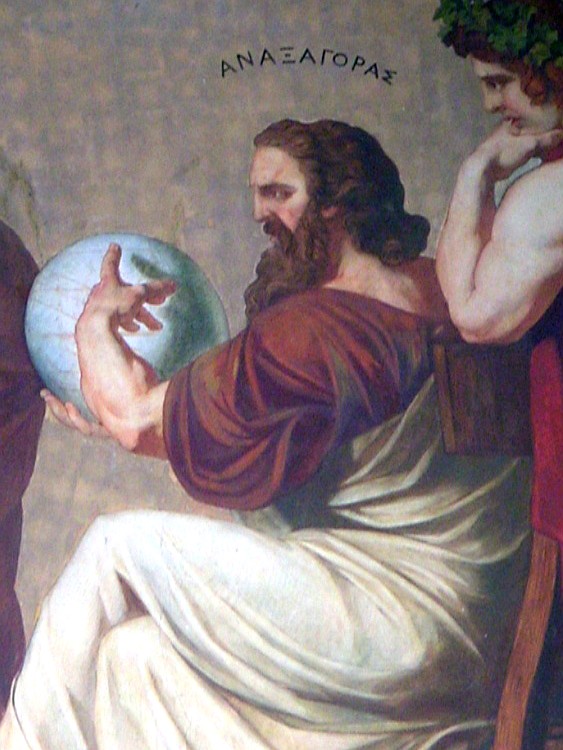
If we can believe the reports then Anaxagoras did indeed have a fairly rational, naturalistic concept of the cosmos, much more so than either Plato or Aristotle, and even appeared to have reasoned about somethings methodologically. He is said to have claimed that the Moon was a rock like the Earth with mountains and the Sun was a big burning rock. Moon light, he correctly blieved to be reflected sunlight. On the basis of this belief, he supposedly deduced the causes of the phases of the Moon and the causes of eclipses of both the Moon and the Sun. The Babylonians could already accurately predict lunar eclipses and also predict when solar eclipses might happen but could not correctly explain their cause. One should point out, however, that these examples of scientific rationalism are imbedded in a sea of metaphysical gobbledegook (not the correct academic term!). Responding to the claim of Parmenides that there exists no change, Anaxagoras waffles on about how everything is everything but is it all controlled by nous (mind), which is not part of everything. I fail to see any naturalism, realism or logic is this but maybe I’m just to stupid.
Anaxagoras appears to have had a rational and largely correct model of part of the cosmos, but it was not shared by his contemporaries and had little influence in antiquity. His views on the earth like and mountainous nature of the Moon, however, were known to and shared by Plutarch (c. 46–119 CE), anticipating Galileo by fifteen hundred years. Plutarch’s work was very well known in the Early Modern Period, so Galileo’s claims, based on his telescopic observations, were not quite as new or shocking as is often claimed. Anaxagoras is a good example of somebody getting something right in the history of science at the wrong time.
Empedocles is another pre-Socratic who reacted to the philosophy of Parmenides, but his explanations are full of gods and daemons lots of mythos and less logos on show here. However, he did deliver up a couple of concepts that weaved their way through the history of science down to the seventeenth century and even beyond. Like Anaxagoras, he seems to have accepted that the Earth is a sphere.
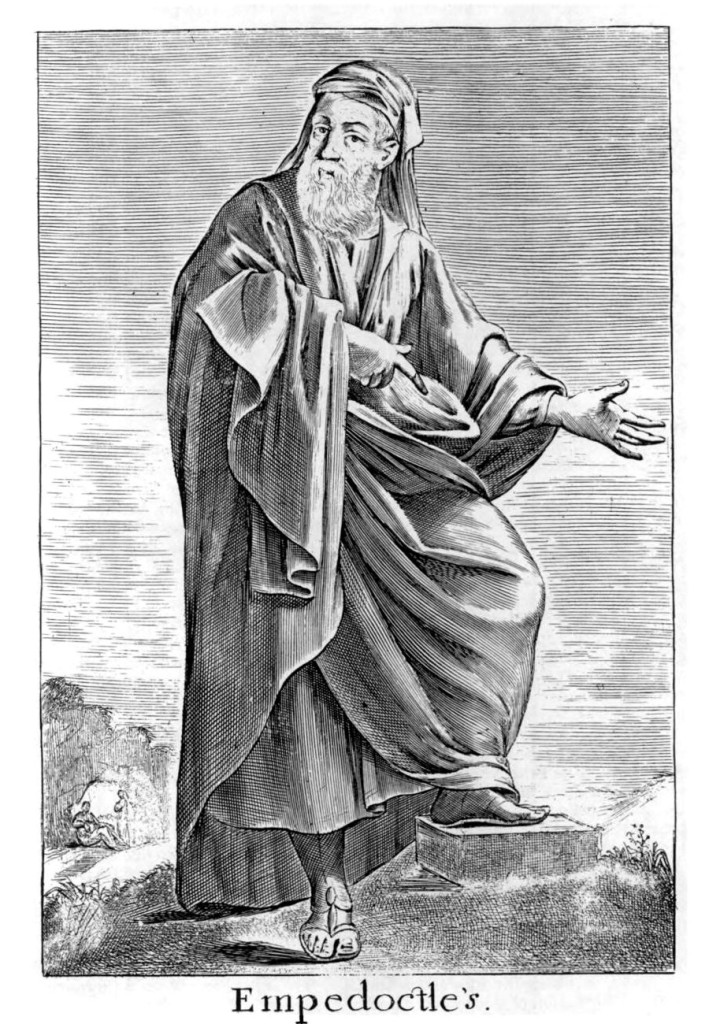
Beyond this in astronomy/cosmology the concept that the orbits of the planets consist of uniform circular motion is attributed to him. The argument being that only if they follow a circular path can the planets proceed with out ripping holes in the fabric of the cosmos, whatever that might be, when they turn the corner. That the same argument applies to other closed geometrical figures, such as the ellipse, appears to have escaped the Ancient Greeks and everybody else until Kepler came along. Whatever, both Plato and Aristotle accepted this as axiomatic, and it became a central dogma of European cosmology.
Empedocles is better known for another central dogma that ruled in the history of European science down to the seventeenth century the four elements theory i.e., that everything in the world consists of different mixtures of four fundamental substances. Empedocles doesn’t use the term elements or initially the terms earth, water, fire, and fire. Empedocles presents them as four roots and as gods:
Hear first of all the four roots of all things:
Zeus the gleaming, Hera who gives life, Aidoneus,
And Nêstis, who moistens with her tears the mortal fountain.
. Woodcut from a 1472 edition of Lucretius’ ‘De rerum natura’.</p>
<p> ” data-medium-file=”https://wolfscientific.com/wp-content/uploads/2023/07/from-cf84e1bdb0-cf86cf85cf83ceb9cebaceac-ta-physika-to-physics-ii-14.jpg?w=300″ data-large-file=”https://wolfscientific.com/wp-content/uploads/2023/07/from-cf84e1bdb0-cf86cf85cf83ceb9cebaceac-ta-physika-to-physics-ii-14.jpg?w=500″ src=”https://wolfscientific.com/wp-content/uploads/2023/07/from-cf84e1bdb0-cf86cf85cf83ceb9cebaceac-ta-physika-to-physics-ii-2.jpg” alt class=”wp-image-11003″ srcset=”https://wolfscientific.com/wp-content/uploads/2023/07/from-cf84e1bdb0-cf86cf85cf83ceb9cebaceac-ta-physika-to-physics-ii-14.jpg 1000w, https://wolfscientific.com/wp-content/uploads/2023/07/from-cf84e1bdb0-cf86cf85cf83ceb9cebaceac-ta-physika-to-physics-ii-14.jpg?w=150 150w, https://wolfscientific.com/wp-content/uploads/2023/07/from-cf84e1bdb0-cf86cf85cf83ceb9cebaceac-ta-physika-to-physics-ii-14.jpg?w=300 300w, https://wolfscientific.com/wp-content/uploads/2023/07/from-cf84e1bdb0-cf86cf85cf83ceb9cebaceac-ta-physika-to-physics-ii-14.jpg?w=768 768w” sizes=”(max-width: 1000px) 100vw, 1000px”></a><figcaption class=) THE FOUR ELEMENTS, 1472. The four elements of Empedocles (earth, air, fire and water). Woodcut from a 1472 edition of Lucretius’ ‘De rerum natura’. Source: Wikimedia Commons
THE FOUR ELEMENTS, 1472. The four elements of Empedocles (earth, air, fire and water). Woodcut from a 1472 edition of Lucretius’ ‘De rerum natura’. Source: Wikimedia CommonsHis so-called roots are moved by the opposing forces of Love and Strife. This theory of the constituent of nature reached the better-known form only after being taken up by Plato and Aristotle, but the latter insists that Empedocles should be credited as the originator of the theory.
There are those who wish to see Empedocles as an originator of the extramission theory of vision, that is we see by light or firm, emitted by the eyes, because of the following fragment:
Just as when someone, before taking to the road, constructs a lamp for himself, A flame of gleaming fire in a stormy night, Fitting, as protection against all winds, lantern casings That scatter the breath of the buffeting winds, While the light, finer as it is, leaping through to the outside, Shines on the threshold with its unimpaired beams, Thus, after Aphrodite had fitted the ogygian fire enclosed in membranes with pegs of love, She poured round-eyed Korê in filmy veils These kept off the depth of water flowing round about them, But allowed the fire to pass through to the outside, in that it is finer, where they had been bored through with marvellous funnels.
But as Lindberg points out (Theories of Vision; From Al-Kindi to Kepler, University of Chicago Press, ppb. 1981, p 4), “However, as Aristotle also notes, Empedocles makes it clear elsewhere that visual perception involves the reception of effluences from the object to the pores of the eye; the problem then to reconcile the two conceptions.” It goes without saying that various modern “experts” interpret them differently.
Turning to the Pythagoreans we are confronted with a mountain of interpretations built out of a molehill. Modern interpreters want to see the firm beginnings of a mathematical approach to science in the theories of the bizarre religious cult. There is a minimum of truth in this interpretation but really only a minimum. Note that I talk of the Pythagoreans and not of Pythagoras, a figure about whom the myths are even more extensive than the legends, to quote the Stanford Encyclopedia of Philosophy:
Pythagoras, one of the most famous and controversial ancient Greek philosophers, lived from ca. 570 to ca. 490 BCE. He spent his early years on the island of Samos, off the coast of modern Turkey. At the age of forty, however, he emigrated to the city of Croton in southern Italy and most of his philosophical activity occurred there. Pythagoras wrote nothing, nor were there any detailed accounts of his thought written by contemporaries. By the first centuries BCE, moreover, it became fashionable to present Pythagoras in a largely unhistorical fashion as a semi-divine figure, who originated all that was true in the Greek philosophical tradition, including many of Plato’s and Aristotle’s mature ideas. A number of treatises were forged in the name of Pythagoras and other Pythagoreans in order to support this view.
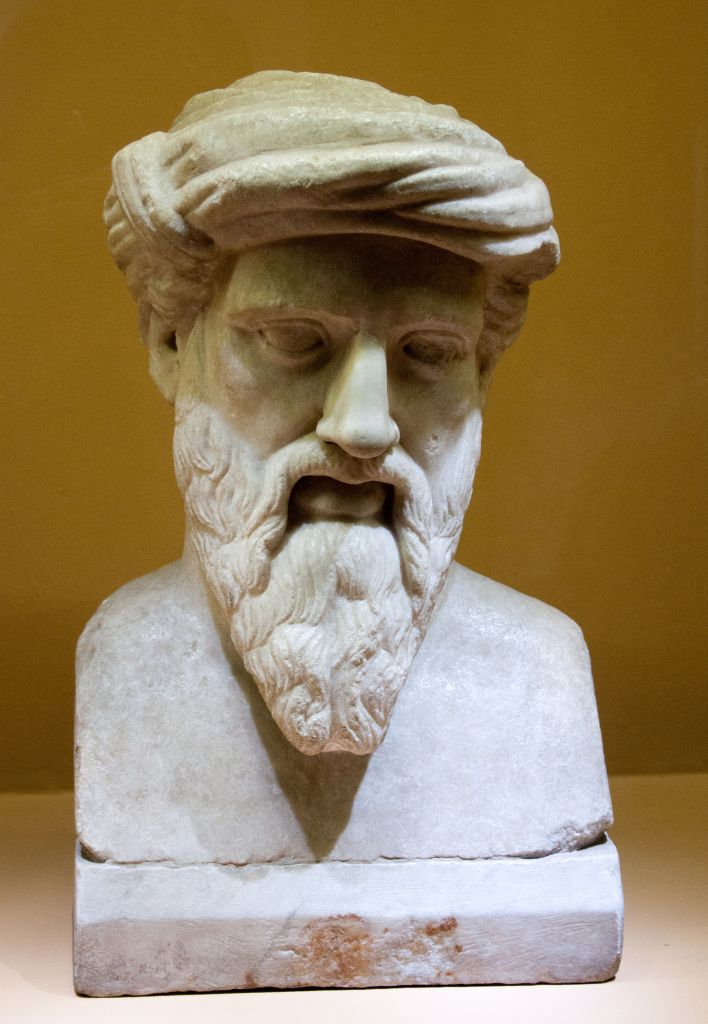
There are no surviving writings by Pythagoras and most of the things attributed to him are from later sources and are more properly attributed to others, who identified as Pythagorean. However, as these things went on to play a significant role over the centuries in European thought, I will at least sketch them here. There is no contemporary evidence of any geometry produced by Pythagoras and the attribution to him of the theorem named after him is found in Proclus, a thousand years after he is supposed to have lived. The theory that the cosmos is made up of the natural numbers is now attributed to Philolaus of Croton (c. 470–c. 385) and in no way scientific but purely mystical.
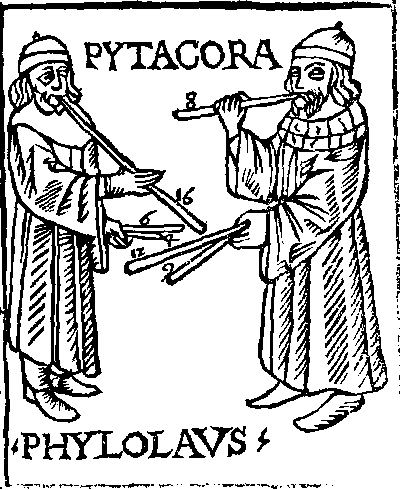
However, this simple number theory together with the musical harmony theories based on it, particularly the Harmony of the Spheres, would have a strong fascination for many centuries down to and including Isaac Newton. The legend that “May no ignorant of Geometry enter here” stood over the entrance to Plato’s Academy together with his insistence on a geometric model of the cosmos are attributed to Plato being a quasi-Pythagorean.
According to Proclus it was the Pythagoreans who introduced the four-fold division of mathematics, later called the quadrivium–arithmetic, geometry, music, astronomy–as a basic concept. It appears first in the Harmonicsof Archytras in the fourth century BCE. It would later go on together with the trivium–grammar, rhetoric, dialectic–to become the nominal undergraduate syllabus on the medieval European universities. It should, however, be noted that the mathematics tuition on the medieval universities was very low level, as I have in the past often emphasised.
The claims that the Pythagoreans founded mathematical science should be tempered with the knowledge that in the time of Pythagoras, Babylonian mathematical astronomy based on algebraic algorithms was far more advance than anything the Greeks had produced up till that time and that the Greeks borrowed much of their astronomy from the Babylonians replacing the Babylonian algebraic models with geometrical ones.
I now turn to the last of my pre-Socratics, the Atomists. The names that immediately pop up are Leucippus and Democritus, whereby, except for the fact that he was Democritus’ teacher, we know next to nothing about Leucippus. Democritus taught that all mater consisted of small particles, atoms, which could not be divided further. These came in various sizes and shapes and whizzed through the void on random paths. Democritus accepted the existence of the void, as opposed to Parmenides, who had argued that it was a contradiction to propose the existence of something that doesn’t by its very nature exist. You can’t point to nothing! We know more about the atomists and what they thought from Aristotle, who carefully analysed and refuted their arguments, than from Democritus.
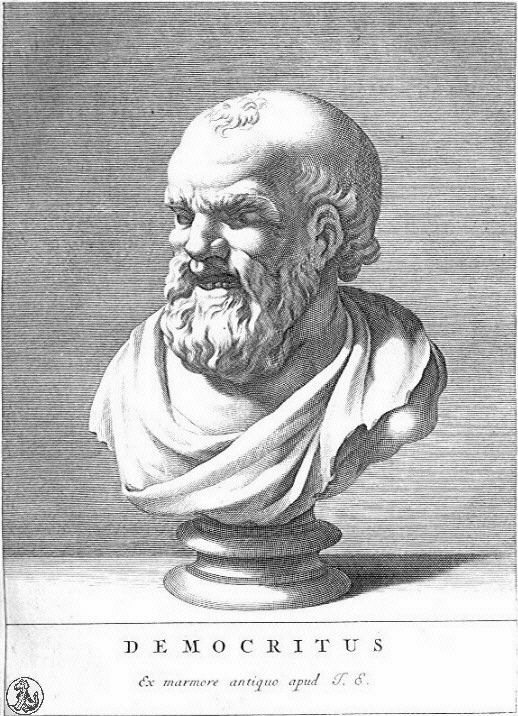
Epicurus (341–270 BCE) incorporated atomism into his largely ethical philosophy.
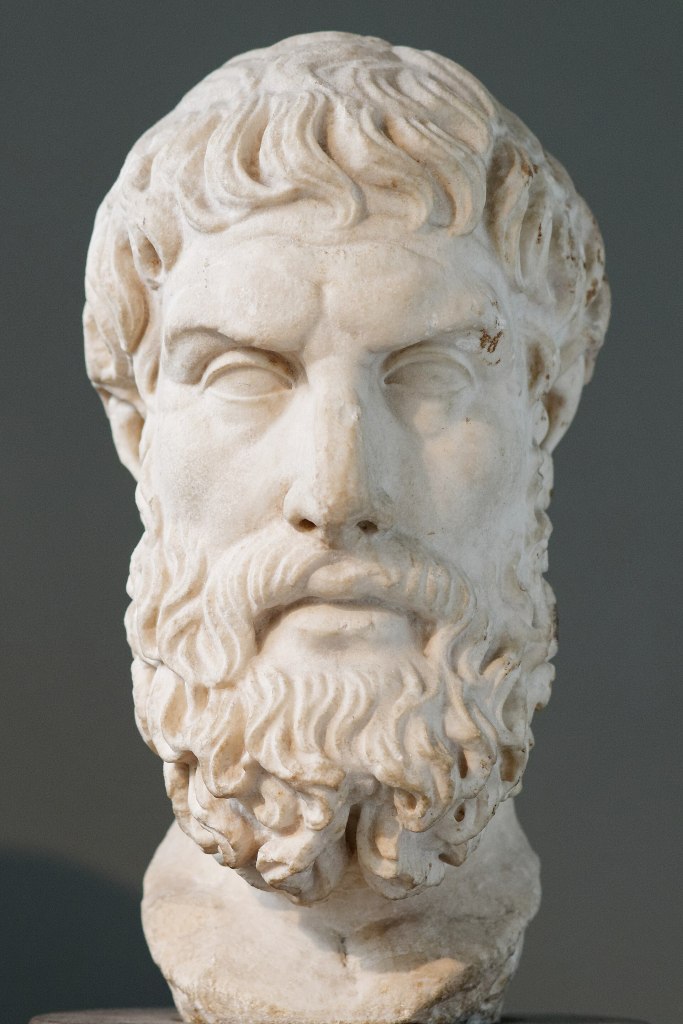
Like many others, Epicurus’ work was largely lost, and it is mostly through the much later revival of Epicurean philosophy by such as Lucretius (c. 99–c. 55 BCE) and Sextus Empiricus (fl. mid 2nd century CE) that we learn of his atomism.
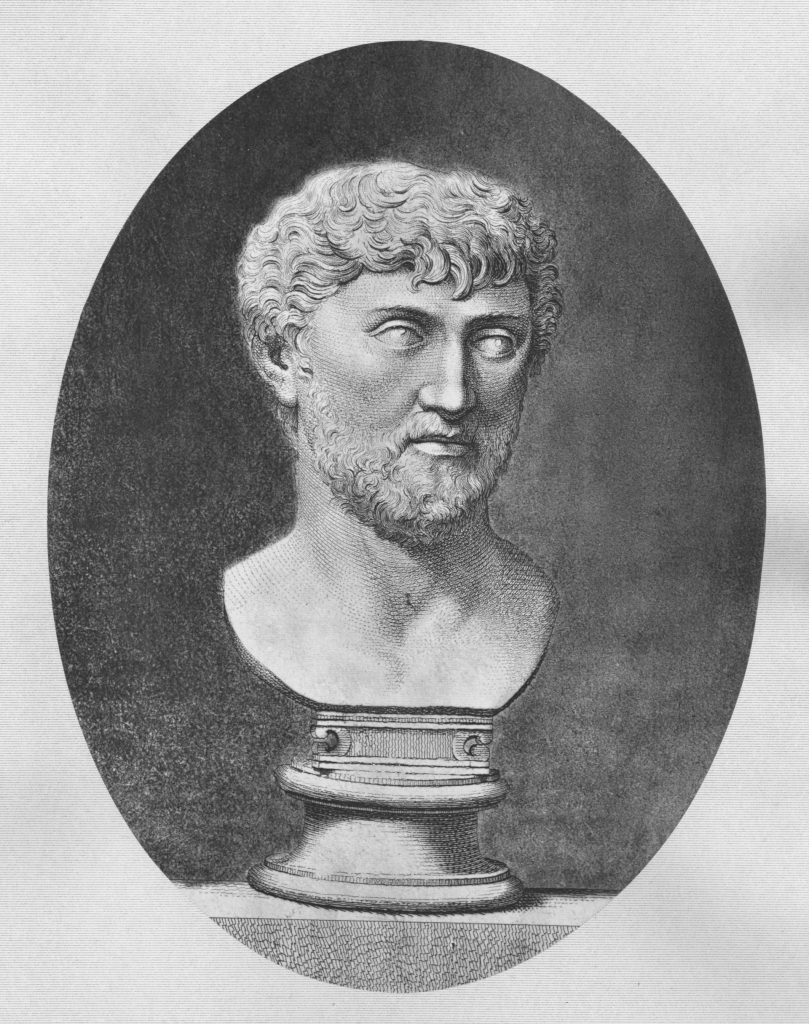
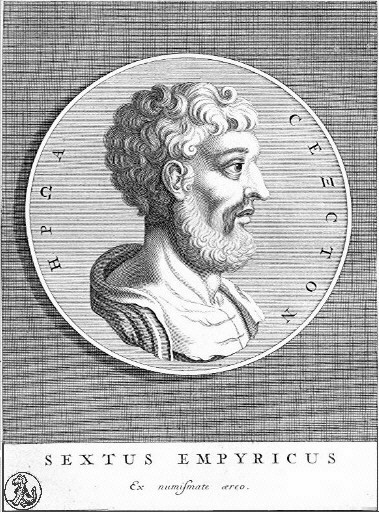
A common error in the history of science is to make a direct connection between the atomism of the Ancient Greeks and modern atomic theory. As is often the case, it is not that simple and a lot happened in between, as we will see.
I have been fairly rude about the claim expressed in the Wikipedia quote above, that “the pre-Socratics invented some of the central concepts of Western civilization, such as naturalism and rationalism, and paved the way for scientific methodology,” which is a fairly widely held belief and which I hold to be hopelessly exaggerated. However, the pre-Socratics did kick off a debate, which the post-Socratics, most notably Plato and Aristotle, reacted to, creating concepts that would inform the European scientific debate for the next two thousand years. I shall in future post be looking at those reactions.
If you have been paying attention, up till now, apart from a bit of mathematics and the basic concept that the world consists of atom, we have encountered almost nothing that really relates to the modern areas covered by the term physics. Quite simply our concepts of separate disciplines for describing different aspects of the physical world just didn’t exist in the pre-Socratic period these disciplines first evolved over time.